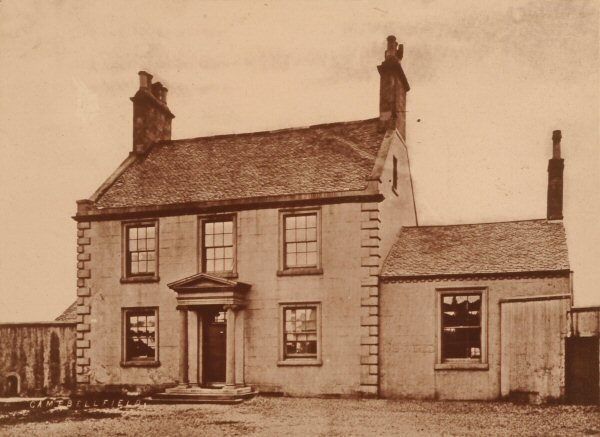

This property is on the south side of Eastern Gallowgate, formerly quite a rural highway, skirted by hedges in many places, and without any footpath at the Campbellfield section. Its precise locality is opposite the new street called "Slatefield Street," now a good landmark.
In the reign of Queen Anne the lands belonged to John Chapman, writer and commissary depute, a contemporary of old M'Ure, who speaks approvingly of him in his grotesque history of the City in 1736. The property had then no distinctive name, but is described in old papers as lying in Nether Gallowmuir, and marching on the south with the Barrowfield estate, and on the east with the lands of Wester-Camlachie.
Mr. Chapman's daughter ultimately succeeded to the greater part of his somewhat extensive properties, and married John Gray of Dalmarnock, Newlands, and Carntyne. Mr. Gray was born in 1715, and descended from a very old Glasgow family. His grandson, a much respected clergyman of the Church of England, who died in 1867, was husband of the accomplished authoress of "The History of Etruria," "A Tour to its Sepulchres," and other learned works.
In 1762 the lands were purchased from the Chapman family by William Auchincloss, merchant in Glasgow, whose wife was a near relative of Thomas Campbell, author of "The Pleasures of Hope." Mr. Auchincloss built the house shown in the photograph, about 1765, and named it, and the lands, "Campbellfield," in compliment to her.
At one time Campbellfield was a beautiful place. The house faced north and stood on the edge of a declivity which sloped southward, commanding an extensive prospect of the Vale of Clyde, now almost entirely shut out by crowds of buildings in that direction. Belts of trees skirted the marches, and were favourite haunts of wild pigeons, so rural was the place. What a contrast now - in the grasp of a great city, and in course of intersection by several new streets.
Mr. Auchincloss died at Campbellfield in 1797, and the property was sold two years afterwards by his heirs to Mr. John M'Adam of Easterhouse, who resided there a number of years. He parted with Campbellfield in 1815 to the late Mr. William Wilson, who very much altered the appearance of the place. In particular, the old-fashioned narrow windows of the house were built up, and only half the number opened, of a different shape, which interfered with the peculiarly quaint aspect of the edifice. The rich beds of clay were dug out, a pottery was erected at the east march; and, finally, the whole grounds were devoted to feuing purposes, as a concomitant of which the house was demolished in 1868, after it had stood upwards of a century. The photograph was taken shortly before the removal of that old edifice.
Back to Contents